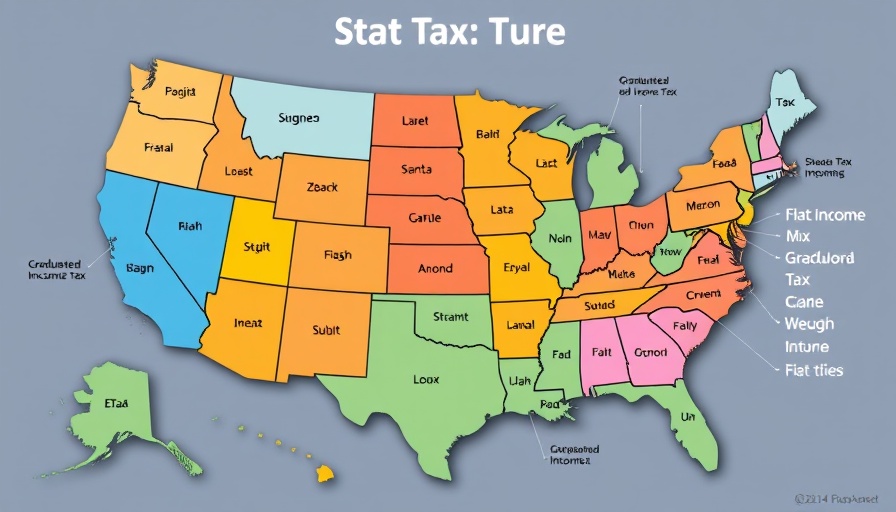
The Rise of Flat Taxes: A Paradigm Shift in State Taxation
In the past few years, a significant trend has emerged across the United States: a growing acceptance of flat taxes as a viable alternative to graduated-rate income taxes. The shift is not merely a political maneuver; it represents a broader movement towards simplifying tax systems and relieving financial burdens on taxpayers. As more states join this trend, the implications for businesses and taxpayers alike are profound.
Understanding Flat Taxes: The Basics
A flat tax, as opposed to a graduated system, applies a single tax rate to all individuals regardless of income level. This concept has gained traction since the early years of state income taxation, and its popularity has surged in recent legislative sessions. Between July 2021 and early 2025, we witnessed six states enact laws to transition to flat tax systems. States such as Arizona, Iowa, and Georgia have implemented these changes, allowing taxpayers a more predictable and simplified taxation experience.
A Brief Historical Context
State income taxes have evolved significantly since Wisconsin implemented the nation’s first tax in 1912 with a two-rate structure. It wasn't until Massachusetts introduced a flat tax in 1917 that this concept entered the conversation. The flat tax trend saw a resurgence only recently, as states recognized the need for tax reforms amidst economic pressures and calls for tax relief.
The Economic Impact: What It Means for Businesses
For CPAs and small to medium businesses, these tax reforms hold crucial implications. A flat tax can simplify tax planning and compliance, easing the burden of navigating complicated tax brackets and regulations. Businesses can allocate resources more efficiently, knowing exactly how much they will owe in taxes without needing to factor in income variants. This predictability not only aids in money management but may also stimulate growth by encouraging investment.
Current Trends: The States Leading the Charge
Currently, 14 states feature flat income tax structures, while a considerable portion does not levy any individual income tax at all. Discussions about potential transitions to flat tax systems are ongoing in Kansas, Missouri, and Oklahoma, showcasing a willingness among lawmakers to explore alternatives to traditional income tax. As we move towards 2025, the landscape could shift further, with potential changes in tax law affecting a broader array of businesses.
Potential Future Developments: Predictions and Outlook
Looking ahead, analysts speculate that the trend towards flat taxes may only gain momentum. Economic circumstances, such as inflationary pressures and public calls for tax transparency, could fuel more states to consider adopting this approach. Additionally, the political climate plays a critical role, and with tax reform sitting on the agenda for various legislative sessions, these discussions are likely to intensify.
The Human Element: Why This Matters to Taxpayers
The transition to flat taxes isn’t just about numbers; it affects the everyday lives of millions. Taxpayers often express frustration over complex tax codes that seem unmanageable. A flat tax system gives clarity, fairness, and peace of mind, creating a more user-friendly environment for all. By simplifying tax obligations, citizens can better understand how their contributions support public services and state initiatives.
Bridging the Knowledge Gap: What Every CPA Should Know
As CPAs and financial advisors navigate these changes, it’s vital to stay informed about the latest developments in tax legislation. Understanding the implications of flat taxes enables professionals to offer better counsel to their clients. Keeping abreast of potential changes and emphasizing the benefits of simplicity in tax planning can set them apart in a competitive marketplace.
Conclusion: Embracing the Future
The flat tax revolution signifies a pivotal moment in American taxation, and its impacts on businesses and taxpayers can’t be underestimated. As more states consider or implement flat tax systems, the financial landscape will likely shift, providing opportunities for growth and clarity. CPAs and small to medium businesses should remain vigilant and engaged in these discussions to make the most informed decisions moving forward.
 Add Row
Add Row  Add
Add 




Write A Comment